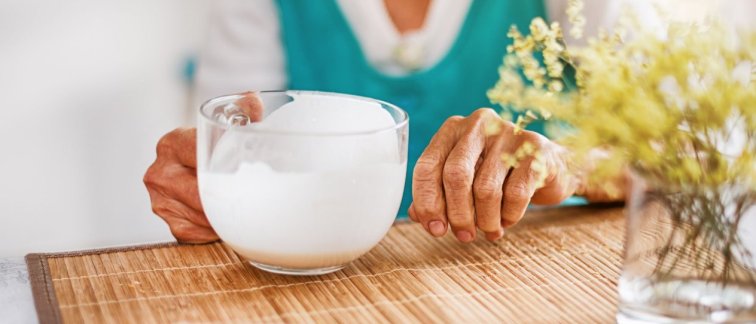"Malnutrition in the elderly urgently needs to be a priority in policy," says Hoogendijk.
At the request of The Lancet, he and fellow researchers wrote an international review article on this subject. We read that 1 in 4 elderly people are at risk of malnutrition. That is, unintentional weight loss, due in part to insufficient meals or nutrients, especially energy and protein. "This group of elderly will grow larger with increasing food insecurity worldwide due to climate change, disease and war. Elderly people are often the first victims in such situations." Not only in low- and middle-income countries, Hoogendijk says, but also in the Netherlands: "In our LASA study 10 to 15 percent of the elderly reported eating poorly or skipping meals in the first and second Covid-19 waves. People who live alone and have little mobility are especially vulnerable."
Medical Priority
Malnutrition among the elderly is still all too common in our country, even more so in care facilities and hospitals than among elderly people living at home. Hoogendijk: "This is widely known among caregivers. Illness is an important risk factor for malnutrition, because in situations of illness people can or want to eat less. Signaling malnutrition in the hospital is often well done, but sometimes insufficient action is taken after that signaling. Because there are other medical priorities. Or because it is not clear who exactly is responsible for the nutrition policy and who is in charge, even after discharge from the hospital. In that case, for example, patients are given dietary advice, but no one follows up on whether patients comply with it. Or the physician refers the patient to a dietician, but no longer has any idea whether the patient actually goes there." Exactly what Hoogendijk and colleagues point out in The Lancet: there are good guidelines for healthcare providers, but they are insufficiently put into practice.
Muscle mass
That has to change, Hoogendijk says, because malnutrition can trigger a cascade of serious effects in a very short time. "Weight loss in the elderly quickly leads to a decrease in muscle mass. This can have functional consequences: less exercise and deteriorated walking. Overall fitness declines, bones weaken and the risk of falling increases. As a result, people no longer enjoy going out and become isolated. This in turn can have far-reaching psychosocial effects: people become lonely or experience a decrease in their quality of life. So it involves a wide range of interrelated complaints."
How can all this be prevented? "First of all, by ensuring that muscle strength and muscle mass are maintained, with good nutrition and sufficient physical activity," Hoogendijk says. He emphasizes, "Prevention and treatment are two different things, though. If someone is already malnourished, exercise is not the first goal. Then you want someone to gain strength first. However, regaining muscle mass later in life is not easy." In an environment aimed at tackling obesity, this requires a different focus, Hoogendijk notes: "We pay close attention - quite rightly - to ensuring that older people do not become overweight, among other things to minimize cardiovascular risks. At the same time, we must continue to realize that being underweight can be just as dangerous. A bit of a paunch in an elderly person may not necessarily be a problem, but rather the reserve they desperately need in case of surgery or adversity."
Integral view
Hoogendijks plea is therefore: involve a dietician in time. "As a physician, don't just give the advice to 'lose some weight,' but also provide support from a professional who takes a more integrated view. After all, the best advice is different for each patient. There should also be a close examination of what is feasible in practice." In this, the environment - family, friends, home care - play an important role. "For example, create fixed and preferably shared meal times. That really helps to eat sufficient and varied meals."
Source: Amsterdam UMC. Read the article in Dutch here.

